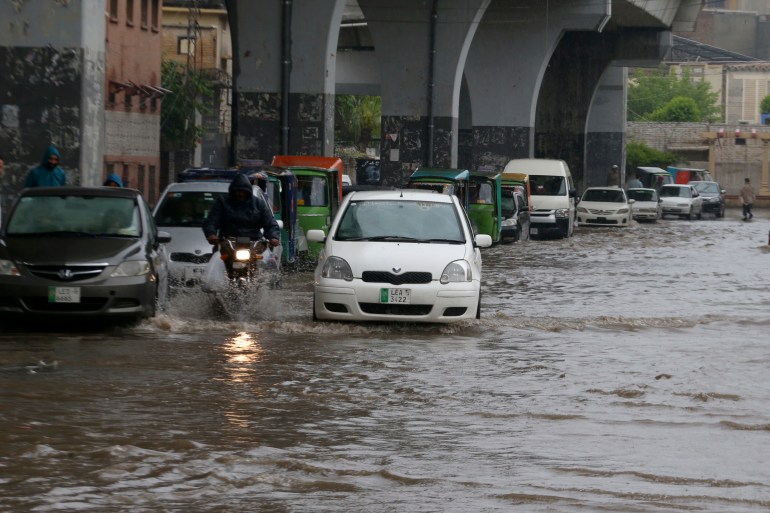Hundreds killed as storms lash Pakistan and Afghanistan
Authorities have called on emergency services to remain on high alert, with more severe weather on the way.

Lightning and heavy rains have killed hundreds of people across Pakistan and Afghanistan.
At least 50 people have died in Pakistan in storms that have been lashing the country, officials said on Tuesday, as they urged emergency services to remain on high alert. Authorities in Afghanistan also reported a death toll of 50 the same day.

Most of the deaths in Pakistan were reported in the northwestern province of Khyber Pakhtunkhwa, where torrential rains and flash floods triggered landslides, damaged homes and uprooted trees.
Rains caused dozens of houses to collapse in the northwest and in eastern Punjab province. A spokesman for the provincial disaster management authority said 21 people had died, with more rains expected this week.

A spokesman for the disaster management authority in Khyber Pakhtunkhwa, bordering Afghanistan, said 21 people died there.
Keep reading
list of 3 itemsRussia, Kazakhstan evacuate 110,000 people as record floods set to worsen
Record floods in Russia’s Ural Mountains
Rain also lashed the capital, Islamabad, and killed seven people in southwestern Balochistan province. Streets flooded in the northwestern city of Peshawar and in Quetta, the Balochistan capital.
Prime Minister Shehbaz Sharif said in televised remarks that he had ordered authorities to provide relief aid. Authorities have now declared a state of emergency in the southwest of the country.
The National Disaster Management Authority (NDMA) has asked emergency services to remain vigilant amid the forecast of severer weather conditions.

Series of disasters
Heavy flooding from seasonal rains has also killed at least 50 people in Afghanistan and injured 36 others over recent days, the Afghanistan National Disaster Management Authority (ANDMA) reported on Tuesday.
More than 600 houses were damaged or destroyed while about 200 livestock died, the Taliban authorities said earlier. The flooding also damaged large areas of agricultural land and more than 85km (53 miles) of roads, he said.
Afghanistan has provided aid to nearly 23,000 families, with flash floods reported in 20 of the country’s 34 provinces.
The storms add to the challenges facing Afghanistan, which is still recovering from decades of conflict and numerous natural disasters.
A series of earthquakes in the western province of Herat in October killed at least 1,500 people, according to the United Nations.
‘Monsoon on steroids’
Speaking to local media, Pakistan Peoples Party chairman Bilawal Bhutto Zardari said climate change was to blame for the surge in lightning incidents.
Despite contributing very little to the global climate crisis, Pakistan remains one of the countries most vulnerable to the effects of climate change.
In 2022, floods – caused by a “monsoon on steroids”, as described by UN chief Antonio Guterres – killed at least 1,739 and affected 33 million people. At their peak, the floods submerged more than one-third of the country.